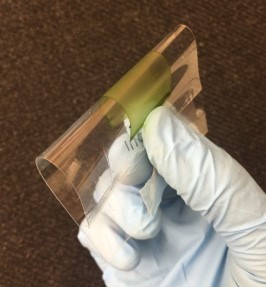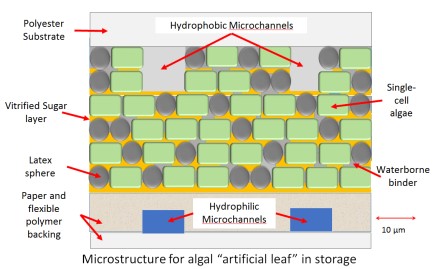Adam Wallace
| M.S., Chemical Engineering, 2019 North Carolina State University B.S., Chemical Engineering, 2012 North Carolina State University |  |
Research Focus: Convectively Assembled Photosynthetic Biocomposites – Cellular Artificial Leaves
Large-scale use of algae for solar energy harvesting and CO2 capture is limited by low photoefficiency and high water consumption. Intolerance to desiccation limits long-term algae storage as photobiocatalysts. My research focuses on engineering thin adhesive coatings of the green algae, Chlamydomonas reinhardtii as a biocomposite materials route to increase photoefficiency and decrease water requirements. Using convective sedimentation assembly (CSA), we are developing methods to deposit closely packed, non-growing C. reinhardtii cc125 as adhesive films that exceed the density of photo-bioreactors. A C. reinhardtii paste, high Tg latex particles, low Tg latex binder particles, and osmo-protective disaccharides are combined and deposited by CSA on flexible polyester (PE). The PE is pre-coated with low Tg latex binder is used to assist adhesion and uniform deposition. These coatings can have a highly organized nanoporous microstructure combining different cell types to maximize incident sunlight and CO2 absorption.

Upcoming work includes measurement of coating wet adhesion, reactivity, and photoefficiency. We also intend to engineer the cells and coatings for desiccation tolerance. This will allow long-term dry storage and shipping of the photoreactive devices with minimal loss of reactivity functionality upon rehydration. The devices will also be engineered to include microfluidic channels. These channels will deliver nutrients required to maintain reactivity and remove products produced by the microorganisms.

